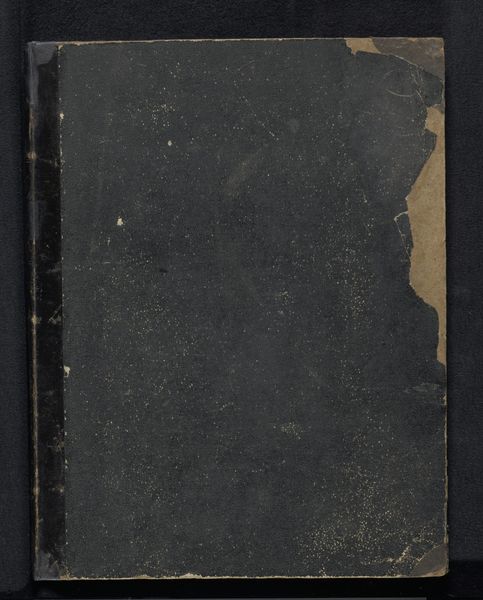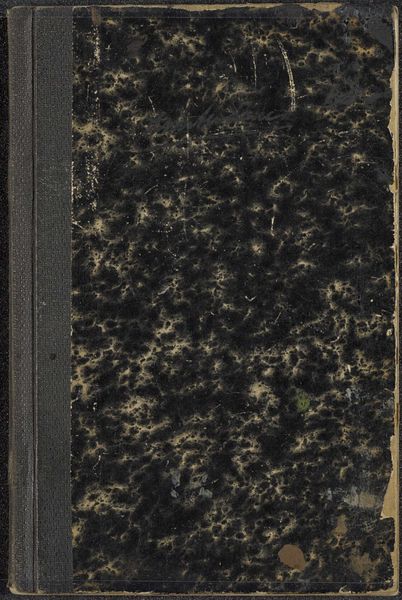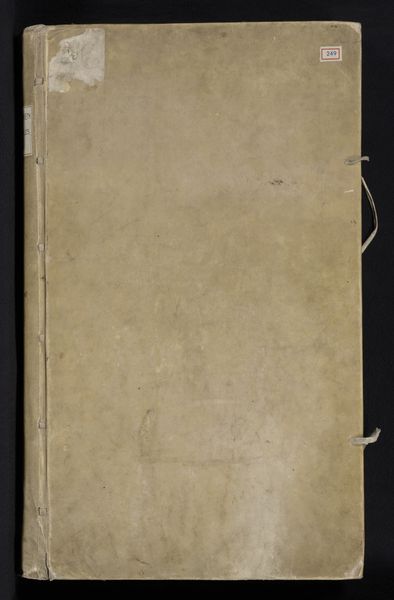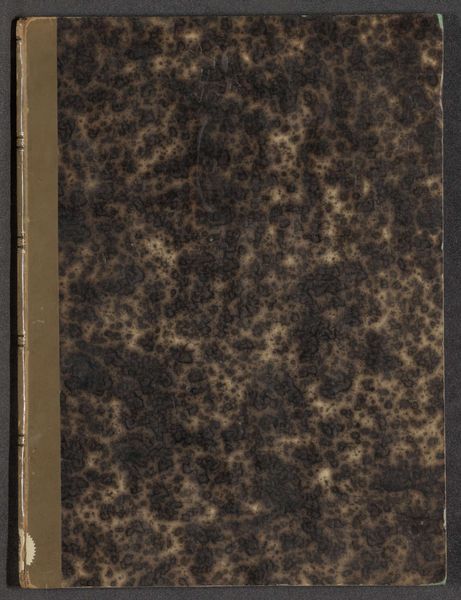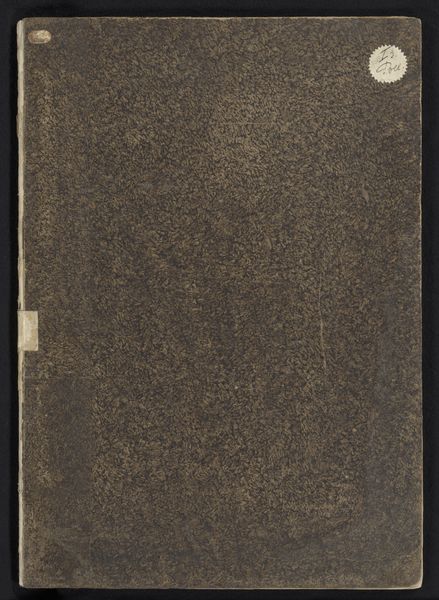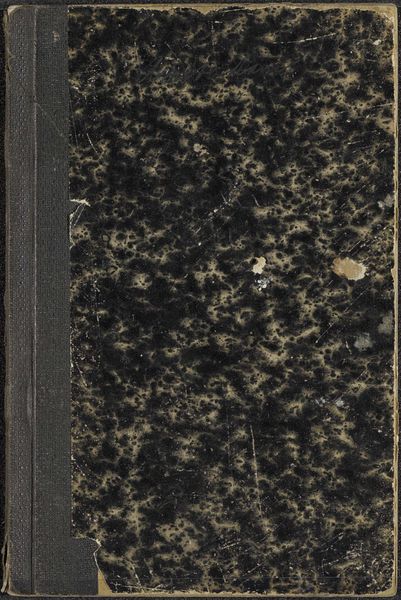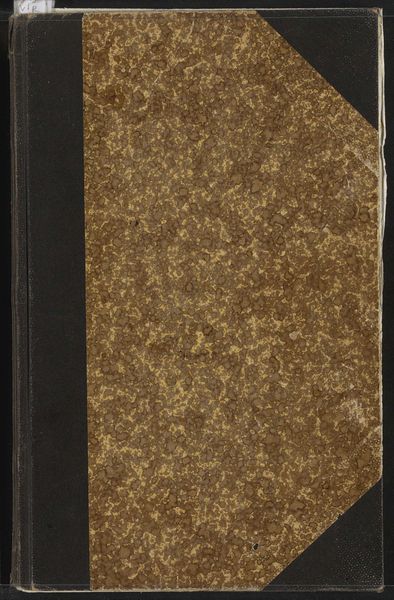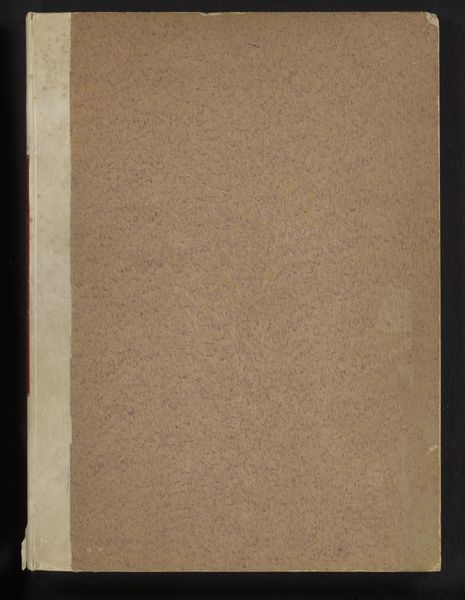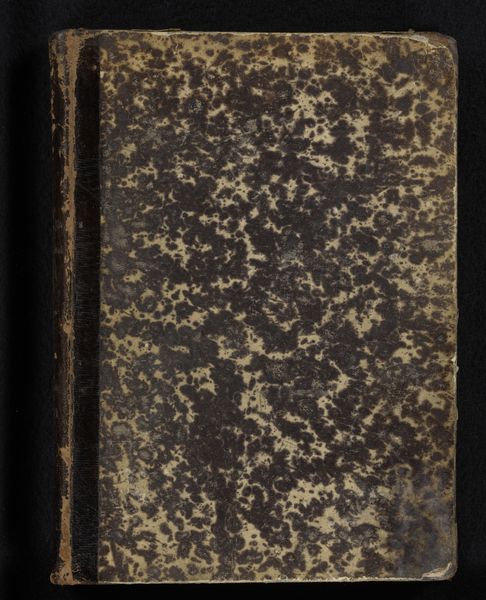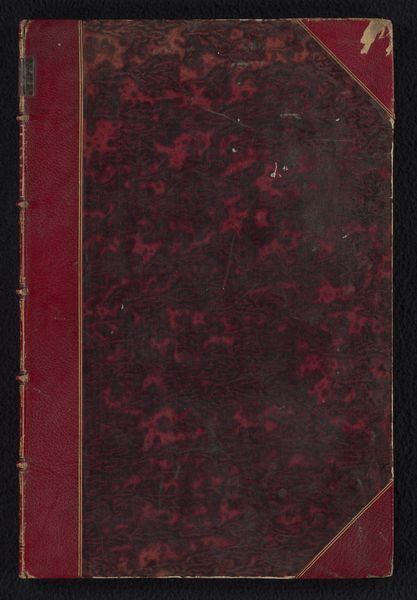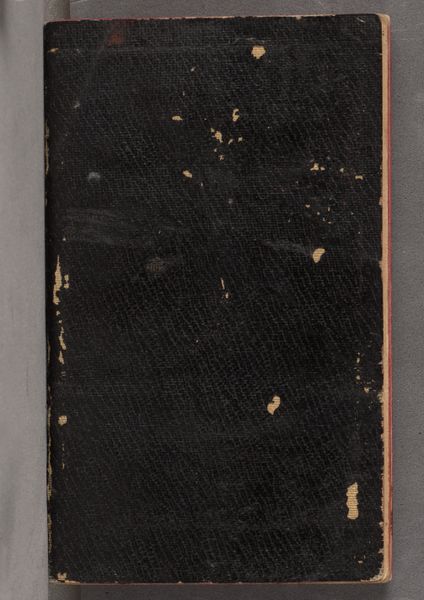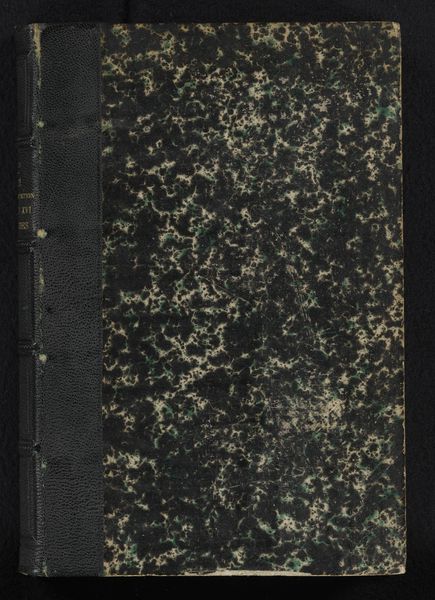
drawing, mixed-media, paper, chalk
drawing
mixed-media
paper
chalk
Copyright: Public Domain
Curator: Looking at this sketchbook from Friedrich Metz, dating back to perhaps 1877, I’m struck by the untold stories held within. Editor: It certainly has that aura of quiet intimacy about it, doesn't it? Like a vessel containing secrets and daily observations. The speckled texture of the cover alone makes me wonder about the hands that held it, the places it traveled. Curator: Absolutely. And understanding Metz’s context is essential here. As an artist operating within a late 19th-century social framework rife with inequalities, what perspectives was he consciously – or unconsciously – embracing, and what might he have been critiquing through his art? What’s not shown, after all, often speaks volumes. Editor: I’m curious about that empty cartouche in the center. The blank space—is that inviting speculation? It almost acts as a mirror, reflecting back our own expectations of what a sketchbook should reveal about an artist’s life. The symbolic weight of that emptiness is really powerful. Curator: It invites us to interrogate the very concept of "the artist's life" – what is included in that narrative, and who is excluded? How do historical power structures shape our understanding of an artist’s practice and the legacy they leave behind? Considering materials of mixed media on paper as this—does that grant access and who had it, for what purpose, for what means? Editor: The use of drawing, chalk, and mixed-media seems particularly fitting. The inherent vulnerability and ephemerality of these materials speak to the fleeting nature of inspiration and the constant process of creation. Perhaps Metz used those materials specifically to remind viewers that life is about an unfolding creation. Curator: It really begs the question, what stories are implicitly valued, validated, and thus recorded? Sketchbooks have historically functioned as vital repositories of artistic process, but access to them and to the narratives of artistic practice they represent isn't always equal. Editor: It also raises interesting questions about the fetishization of objects that were initially intended as utilitarian. The object takes on an aura. It reminds us that an ordinary, intimate object like a sketchbook is far from neutral. It acts as a charged cultural artifact loaded with meanings about the artist, the time, and ourselves as interpreters. Curator: It's been enriching to think about it. This humble notebook provokes complex questions. Editor: Indeed. Sometimes the quietest objects prompt the loudest dialogues within us.
Comments
No comments
Be the first to comment and join the conversation on the ultimate creative platform.

